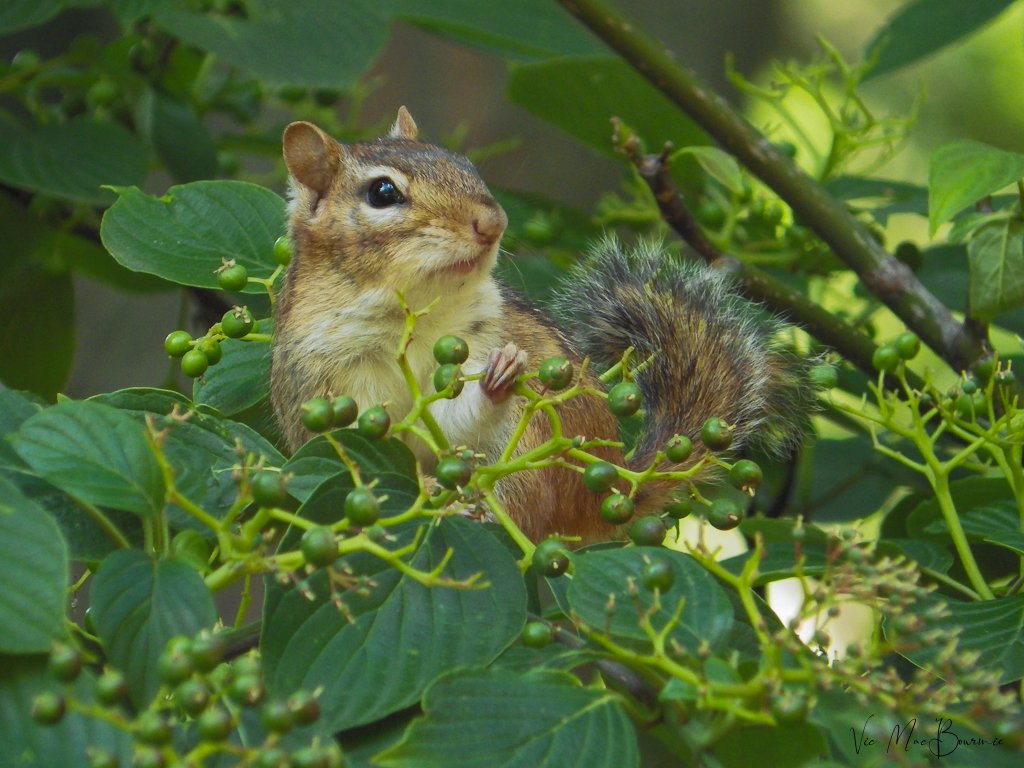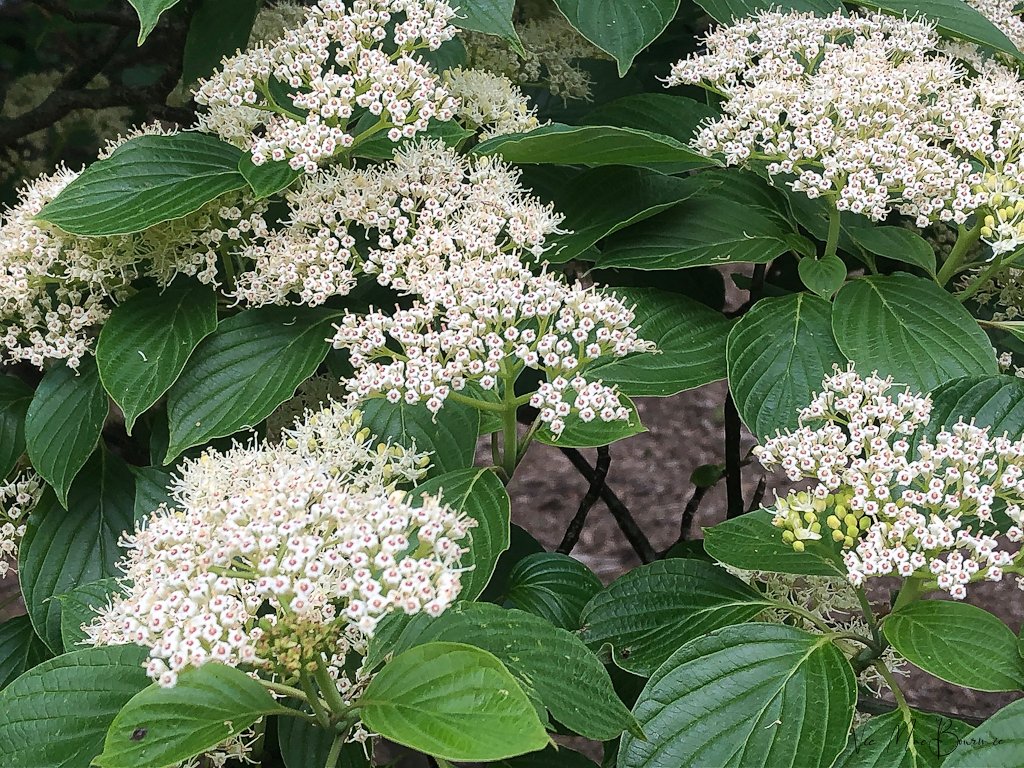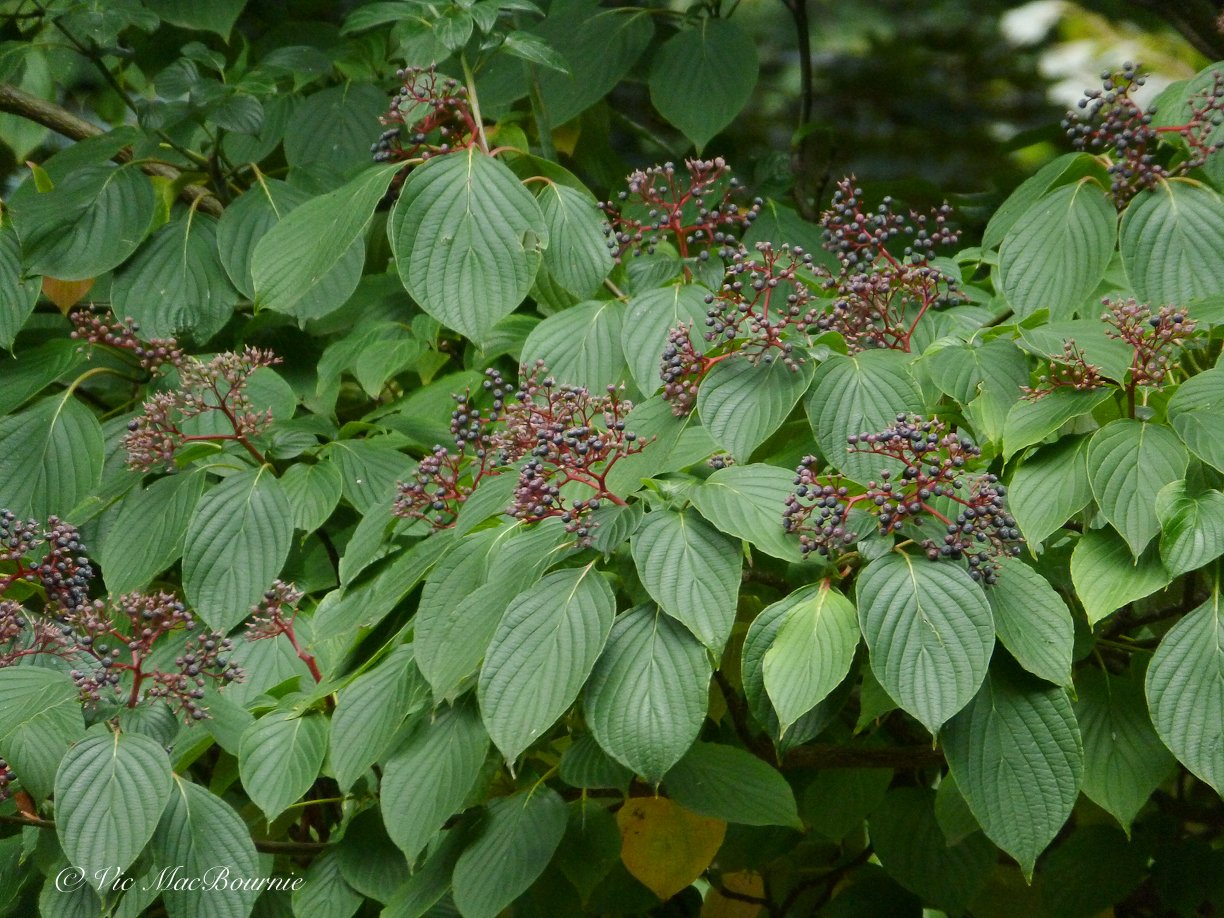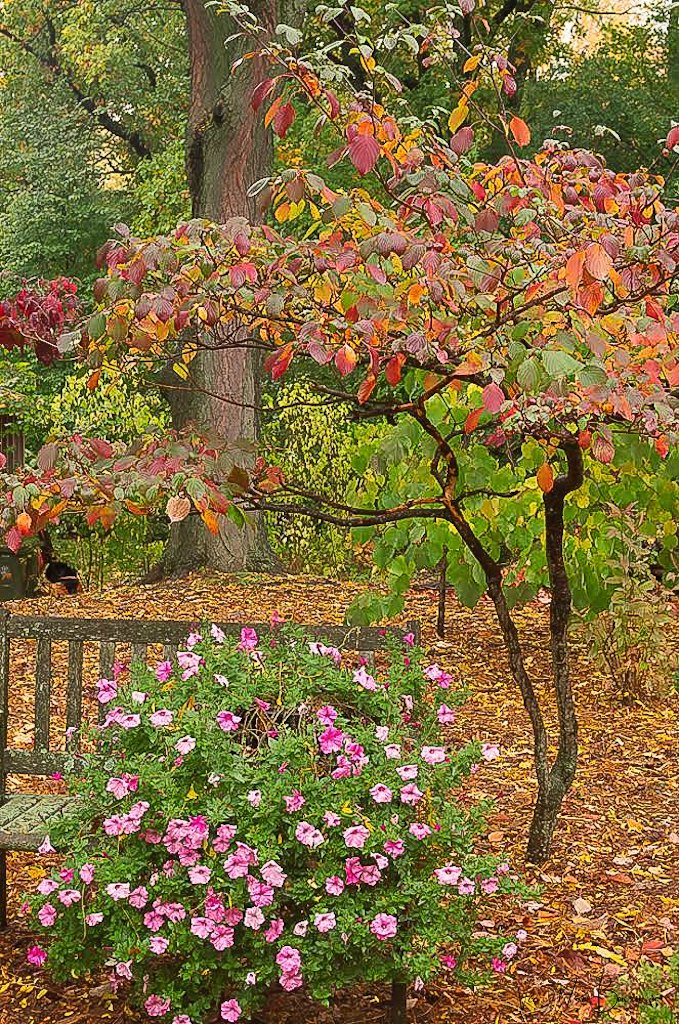Cornus Kousa: Outstanding tree and why you need to reconsider planting it
The Cornus Kousa is a spectacular accent or understory tree for the woodland garden. Although it is a spectacular tree in full bloom, it is native to China.
Consider starting with the native Cornus Florida
Without a doubt the most impressive understory tree in our woodland garden is the Cornus Kousa, but I urge gardeners thinking about planting one to reconsider.
It’s not that the Cornus Kousa isn’t spectacular in flower – it is.
It’s not that the fruit that follows is not impressive and a favourite of our local squirrels and chipmunks because they are.
And, it’s not because these elegant, horizontally branched trees are susceptible to disease and deer predation, because they are almost totally free of disease and other garden pests.
Sounds like the perfect tree, right?
Just one big problem – and it’s a problem many of our most visually pleasing and impressive plants and trees have in common, – it’s not native to North America. Its home is in China and other parts of Asia where, I am sure, it is a favourite food source for their native insects, caterpillars, birds and mammals. In fact, you will often find the plant referred to as the Chinese Dogwood.
The difference is, their local fauna has grown up and adapted to Cornus Kousa and, as a result, are able to use it as a host plant, a food source and provider of habitat.
With all that said, I have two massive Cornus Kousa trees growing in my yard and absolutely treasure them for their mid-summer display of large, cream-coloured flowers that bloom for months during the summer followed by bright red eatable raspberry fruit that eventually get picked off by red squirrels, grey squirrels and chipmunks.
Be sure to read my detailed look at the Six best Dogwoods in my garden.
More of my posts on Dogwoods
For more information on Dogwoods, please check out my other posts listed here:
Dogwoods: Find the perfect one for your yard
Flowering Dogwood: Queen of the Woodland garden
Bunchberry: The ideal native ground cover
This graphic was produced by Justin Lewis and shows the benefits of planting a native dogwood over a non-native.
So, when I say “reconsider” planting one of these small, but impressive trees, what I really mean is before you plant one, make sure you’ve already planted the equally beautiful (some would say more beautiful) native Cornus Florida or Flowering Dogwood.
In fact, the combination of the Cornus Florida and Cornus Kousa growing alongside one another is an impressive site that creates an outstanding blooming period beginning in May with the native dogwood and continuing into late summer with the Kousa dogwood.
In our woodland garden there is also a couple of early blooming native Redbuds growing with the two dogwoods creating a a truly dramatic spring show. A multi-stemmed serviceberry is also beginning to make its presence known in the grouping that grows out of our massive fern garden. Be sure to check out the full story on our fern garden.
Our native Flowering Dogwood blooms about a month earlier than the Kousa and on mostly bare branches which make its bloom even more impressive than the Kousa dogwoods. It is also a host plant to a huge variety of insect larvae and caterpillars as well as a favourite haunt of native birds including the elusive bluebird and the cardinal, just to name two stalwarts.
Be sure to check out my full story on the Flowering Dogwood (cornus Florida).
An example of Cornus Kousa fruit (raspberry like) ripening on the tree.
But back to the Cornus Kousa. And why it is such an outstanding landscape plant either used as a specimen or as an understory tree in the woodland or shade garden.
Cornus Kousa has more of an upright habit, making it a little better suited to smaller or more narrow properties.
Close-up of ripening bright red fruit of the Cornus Kousa.
How to grow Cornus Kousa
The Cornus Kousa grows in zones 4 through 9 and likes a rich, well-drained acidic soil and adequate precipitation to look its best.
Chinese Dogwood is a multi-stemmed deciduous tree with an expected growth of between 25-40 feet (8-12 m) tall at maturity, with a spread of about 25 feet. If left natural, it has a low canopy with a typical clearance of about 3 feet from the ground. It grows at a medium rate, and under ideal growing conditions should live for 40 or more years.
Cornus Kousa’s best features
Cornus Kousa’s most prized feature is its horizontally-tiered branches along with its showy clusters of white flowers (actually bracts, the flowers are contained inside the four bracts) held upright atop the branches in late spring through summer depending on its location in the garden. The Cornus Kousa flowers are more pointed than the native Flowering dogwoods more rounded ones.
It has bluish-green deciduous foliage that turns an outstanding brick red in fall. It does best in full sun in cooler climates to partial shade and will not tolerate standing water. Cornus Kousa is also resistant to the dogwood anthracnose disease making it popular in areas that experience outbreaks of the fungus disease that can be fatal to the trees.
How to prune Cornus Kousa
This low-maintenance tree should be pruned sparingly after flowering to maintain its horizontal branching that looks at home in any Japanese-style garden as well as a traditional woodland. It’s also a good idea to mulch around the extensive root zone to protect the tree’s roots from drying out.
Hybrids offer best of both
The popularity of the Cornus trees have prompted Rutgers University to create a host of hybrids between Cornus Kousa and Cornus Florida, selected for their disease resistance and flower appearance.
Some of the popular cultivars include: Beni Fuji with deep red-pink bracts, Elizabeth Lustgarten and Lustgarden Weeping notable for its smaller size and weeping habit, Gold Star a slower growing tree with a broad gold band on its leaves and reddish stems, Satomi with deep pink bracts and leaves that turn purple to deep red in fall.
Pagoda Dogwood: Shade-loving native tree for woodland, wildlife
The Pagoda Dogwood or Cornus Alternifolia is a small native tree or shrub that is perfect for a woodland garden and vital to native wildlife, including birds, caterpillars, insects and mammals. It’s also an elegant, multi-layered tree with a beautiful horizontal habit that works as well in a woodland garden as it does in a Japanese inspired garden.
My love affair with dogwoods actually had its roots not with the showy Flowering Dogwood, but with a lesser known native dogwood – Cornus Alternifolia.
You may know it as Pagoda Dogwood or Alternate-Leaved dagwood if you know it at all. Trust me, if you don’t already know about Cornus Alternifolia, you need to get to know this outstanding little gem of a dogwood. My first experience with it was in our previous home where I planted it outside the office window where I could admire it and its avian visitors spring, summer, fall and throughout the winter.
When we moved to our current home more than 23 years ago, the first tree/shrub I planted was another Pagoda Dogwood, and it continues to impress me to this day with its longevity and strong presence in the garden throughout the seasons.
Be sure to read my article on six of the best native dogwoods.
The native to the Carolinian forest is not always the showstopper, taking a back seat to the more showy Flowering Dogwood, but it’s like a younger sibling fighting hard to unseat Cornus Florida for top spot in the forest.
Cornus Alternifolia (Pagoda Dogwood) is a semi-colonizing 25-foot tall shrub or tree with a strong horizontal layering habit, that spreads by both seeds and layering. It grows in partial shade to full sun in moist, well-drained rich loamy, slightly acid soil.
This little chipmunk wasn’t waiting around for the birds to help themselves to the berries of the Pagoda Dogwood in the backyard. She searched out the ripened blackish berries as soon as they were ready for eating.
How big do Pagoda Dogwoods get?
Cornus Alternifolia or Pagoda Dogwood is a small tree or shrub reaching anywhere from 15-25 feet tall with an impressive spread of between 12 to about 32 feet.
Is the Pagoda native to areas of Ontario and the United States?
It’s native to Ontario and Northeastern United States and elsewhere including parts of the upper Midwest and even into parts of Minnesota.
How can you tell a Pagoda Dogwood?
In nature, you can spot a Cornus Alternifolia by its characteristic horizontal branching habit, creamy umbrel-style flowers, black berries and deeply veined, ovate leaves that turn a lovely shade of redish, orange in fall. Also, its Latin name is derived from the alternate position of the leaves on the stems.
Without a doubt, however, its most impressive feature is its truly elegant horizontal branching habit that gives the tree its beautiful shape in the woodland garden and makes it a valuable addition to a Japanese-style garden.
More of my posts on Dogwoods
For more information on Dogwoods, please check out my other posts listed here:
Dogwoods: Find the perfect one for your yard
Flowering Dogwood: Queen of the Woodland garden
Cornus Kousa: Impressive non-native for the woodland garden
Our Pagoda Dogwood in full bloom. Each of these florets will form berries that are particularly attractive to a host of birds from Bluebirds to Cardinals. The berries start off green and eventually turn a blackish-blue as they ripen.
When does the Pagoda Dogwood flower and produce berries
The Pagoda Dogwood’s creamy, umbrel-like flowers bloom from May through July depending on location, followed by clusters of black fruit in July that attract a host of birds from the Eastern Bluebird to Scarlet Tanagers just to name a few. Chipmunks and red squirrels are also regular visitors and will strip the berries as fast as they ripen.
Pagoda Dogwood berry clusters are loved by both birds and chipmunks in our yard.
What is a Pagoda Dogwood’s Lifespan?
Our original Cornus Alternifolia is still doing well after more than 23 years in the garden. It’s no surprise that it is still gracing our woodland considering the longevity of these tough little trees. Pagoda Dogwoods can live between 50 - 150 years old so there is a good chance it will still be around for a few years yet. A second Pagoda Dogwood was planted a few years ago in the understory of two very old crabapple trees located not too far from the original Pagoda.
What birds are attracted to the Pagoda Dogwood?
The list of avian visitors is almost endless and include the highly sought after Eastern Bluebird, a variety of Vireos and Thrushes as well as Cedar Waxwings, Gray Catbirds, Cardinals, Scarlet Tanagers, Eastern Kingbirds, Rose-Breasted Grossbeaks and Yellow-Bellied Sapsucker.
Our original 23-year-old Pagoda Dogwood in spring bloom showing off its multitude of blooms. The umbrel-type, creamy flowers are not the show stoppers of the more showy Flowering Dogwoods, but they hold their own in the woodland as a lovely understory tree.
The same 23-year-old Pagoda Dogwood in its fall coat.
Is Cornus Alternifolia a host plant?
The Pagoda, like most native plants, is a host plant to a number of Lepidoptera (caterpillars or larvae of moths and caterpillars) including: The Fragile Miner Bee, Summer Azure butterfly, the impressive Cecropia Moth, Fragile White Carpet Moth and Unicorn Caterpillar.
What Native bees does Cornus Alternifolia attract?
The spring and summer flowers provide nectar and pollen for a number of our native bees including: The bright flourescent Sweat Bees, Miner Bees, Masked Bees and Hover Flies.
What other species is the Pagoda Dogwood related to:
Dogwoods represent a large species ranging from the impressive and equally beautiful Flowering Dogwood (Cornus Florida) to the diminutive Bunchberry (Cornus Canadensis) with its familiar dogwood flowers in minature form growing in large swaths as a ground cover. Other related species include: Red-Osier Dogwood, Rough-leaved, Grey, silky and Round-Leaved.
What cultivars are available for the Pagoda Dogwood?
Using the native, non-cultivar or species tree/shrub is always a solid choice if you want to attract or provide food for the largest variety of wildlife in your garden. There are, however, popular cultivars of Cornus Alternifolia if you are looking for specific traits in the plant.
Golden Shadows: This brightly-coloured variety (zones 3-8) from Proven Winners sports variegated leaves that help the plant stand out in a shady area of the garden where it reaches heights of 10-12 feet with an equal spread. The highly successful company describes the plant as: “bright yellow with a splotch of emerald green in the cenre, taking on pink tones on the new growth in cool weather. Spring sees the plant graced with lacy white blooms. Beneath all this beauty lies a tough North American native that can grow in many difficult conditions; Golden Shadows Pagoda Dogwood is especially noteworthy for its ability to thrive in light shade, its bright foliage bringing colour and beauty to otherwise dim sites.”
C. alternifolia 'Argentea' is known as silver pagoda dogwood and is similar to Golden Shadows but sports a green and white variegation rather than the green and gold.
Cornus controversa: Sometimes called the Wedding Cake Tree, it is a spectacular, extremely showy giant pagoda dogwood with a mature height of 60 feet. When this tree is in flower it is simply a spectacular site. Grows in zones 6-9 and is the winner of the prestigious Award of Garden Merit from the Royal Horticultural Society.












